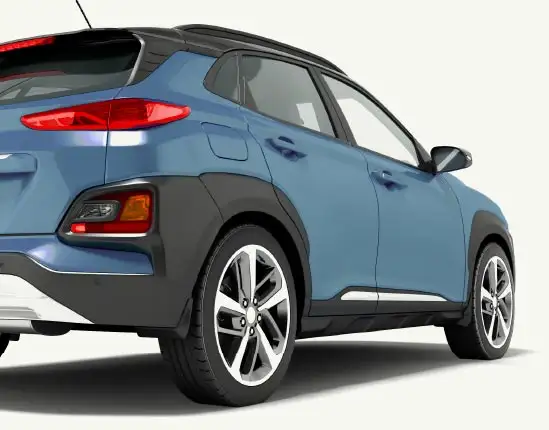Recent Blog Articles

List of blog articles on our auto buying marketplace
We at myAutoloan know the holidays are hectic, but we're here whenever you need auto financing help. Get pre-approved for a car loan, refinance your existing loan, or use our advanced payment calculator all available 24/7. One application gets you up to four lender offers to compare.
Tips on Car Loan Financing By Dale PetersonPurchasers can obtain an automobile loan from a lender at an auto dealership, but often pay more in marked-up interest than needed.
The Hidden Cost of Turning Away Credit Invisible Customers By Greg ThibodeauWhy the traditional system rejects so many otherwise strong borrowers, how lenders can use technology to safely approve no credit car loans, and what the real financial cost is when institutions ignore the credit invisible segment.
Can't Gift a Car? Time to Buy Yourself One With Smart Financing By Staci BaileyIf you can't afford to gift a car to someone else, invest in yourself instead. Getting approved for an auto loan is straightforward when you know your budget, check your credit, and compare multiple lenders.
Applying for Auto Loans and Refinancing Made Easy with myAutoloan By Greg ThibodeauDiscover the convenience of online auto financing with myAutoloan.com! Enjoy a user-friendly application process, transparent loan options, and an Interest Rate Estimator tool to make informed decisions. Start your journey to vehicle ownership or refinancing today!
Private Party Auto Loans: How to Finance a Car From a Private Seller By Staci BaileyGet a private party auto loan to buy from an individual seller. Learn how private seller auto loans work, what lenders require, and how to get approved for financing outside a dealership.
The State of the Gas-Powered Car Market: A 2023-2025 Price & Performance Report By Greg ThibodeauAre you in the market for a new car but not ready to make the switch to electric? Here’s a detailed look at what’s been happening with the prices, fuel economy, and options for traditional gasoline-powered vehicles over the last three years.
How Much Car Can I Afford This Holiday Season? (Spoiler: Probably Not One With a Bow) By Staci BaileyIt's that time of year where we get commercials about giving a car as a gift! If you can gift someone, or yourself, a car, do so wisely, with the best rates.
How to Refinance a Car Loan When Your Payment Is Too High By Staci BaileyLearn how to refinance a car loan to lower your monthly payment, and get up to 4 lender offers with one application. Find out if refinancing your car is right for you.
The Importance of Choice and Transparency in Auto Refinance Loans By Greg ThibodeauChoosing to refinance your auto loan can be a fast way to lower monthly payments, reduce the interest you pay over time, or shorten your loan term.
3 Reasons to Refinance Your Auto Loan By Greg ThibodeauWhether you're looking to save money or rethink your loan structure, refinancing your auto loan can be a smart financial move that brings multiple benefits.
How Many Car Loan Applications Is Too Many? By Staci BaileyYou can submit multiple auto loan applications, however, applying to dozens of lenders wastes time and increases error risk.
Benefits of Buying a Used Car in 2025 By Greg ThibodeauThe used car market offers a smarter path forward to get a reliable car with modern features.
Used Car Loan - An effective way to go about saving money By Dale PetersonA used car loan can considerably increase the savings and is obtained in the same way as a new car loan
Your Lease Is Ending-Why Buying It Might Be Smarter Than You Think By Staci BaileyThe end of a lease doesn't have to mean starting over with a new vehicle and new payments.
Used Auto Loans vs. New Auto Loans By Dale PetersonDid you know getting a loan for a used automobile is just as easy as getting a loan for a new one?
Planning the Perfect Family Road Trip (When Your Car Has Other Plans) By Staci BaileyMany families are driving vehicles that handle daily errands just fine but might struggle with the demands of a multi-day road trip.
Your Credit Score Improved, How to Cash In on Better Car Loan Rates By Greg ThibodeauIf your credit score has actually improved, you may be in a strong position to save serious money on your car loan.
Fed Rate Cut Signals New Opportunities for Car Loan Refinancing By Staci BaileyThe Federal Reserve just made its first move of 2025 that could put money back in your pocket.
7 Car Loan Mistakes That Cost You Money (And How to Avoid Them) By Greg ThibodeauLearn about frequent car loan pitfalls and how to sidestep them to ensure a smooth financing experience.
Does Refinancing an Auto Loan Hurt Your Credit Score? By Greg ThibodeauRefinancing your auto loan can lead to lower interest rates and monthly payments, but it's essential to understand its impact on your credit score and overall financial health.
Summer's End Doesn't Mean Your Riding Season Has to Stop By Staci BaileyWhile fair-weather riders pack their bikes away after Labor Day, smart motorcyclists gear up for the most comfortable riding months of the year.
Ideas That Save Money Financing an Auto Loan By Dale PetersonGetting new auto financing can be easy and quick if done right. Given the numerous lending platforms available in the market, it is essential to understand how to make the right choice.
Used Car Prices Surge for 5th Straight Month: Smart Financing Can Help You Navigate the Market By Greg ThibodeauIf you've been shopping for a car lately, you've probably noticed something alarming: prices keep climbing.
Fed Rate Cuts Coming? Perfect Time to Refi Car Loan By Staci BaileyWith economic signals pointing toward possible rate reductions ahead, millions of Americans with auto loans are wondering if they can secure a lower auto payment through refinancing.